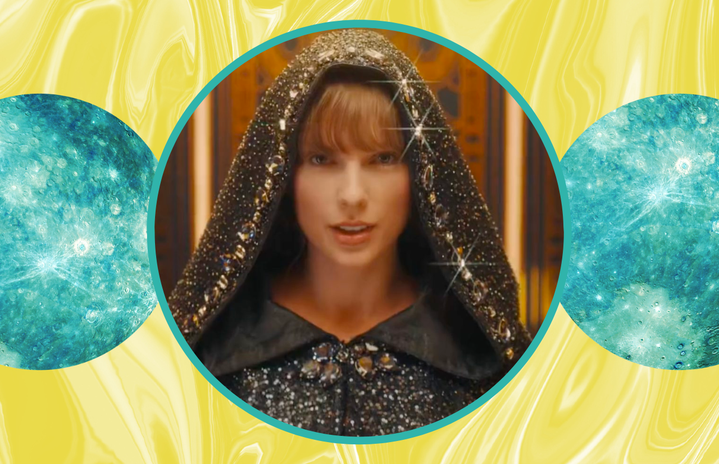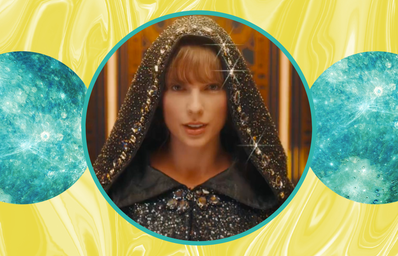Like most of the world, the soundtrack of my past week has solely consisted of Midnights by Taylor Swift since its highly anticipated release on October 21, 2022. The pop icon’s tenth studio album, and first album that has not been a rerecord of a previous record since 2020’s evermore, is perfectly in tune with Swift’s chameleon-like tendency to switch genres at the drop of a hat. She has continued to grow throughout the span of her 10+ year career, moving from country to pop to indie (and nailing each one effortlessly) with her fans by her side every step of the way. Her newest album Midnights features more of a return to pop that has been missing from her past two albums, but with the perfect injection and introduction of synth tones and reverbing voice effects and filters reminiscent of 1989 (2015) and reputation (2017). Though the lyrics of Midnights are incredibly and painfully reflective at times, there is no doubt that the album is vastly more upbeat than 2020’s beautifully depressing folklore, my favorite Taylor Swift album.
Initially, I went into Midnights expecting a folklore kind of sound, as the previous record has been the soundtrack of the past few years of my life. As a person who mainlines sad music, folklore is my bread and butter in a quite obviously self-loathing and comfortably depressed way. When hit between the eyes with the more upbeat and synth-pop sound of Midnights after two years of self-identifying with soul-crushing songs like “mirrorball” and “this is me trying,” I was inclined to join the chorus of people on the Internet who were slightly disappointed with the record. Though I quickly reevaluated my previous sad girl qualms with the project and became just as entranced with Midnights as with every other thing Swift has created, I realized why the new record was so jarring to me and why it was a problem that I was so jarred.
I think a lot of the time, we can get almost too comfortable with the feeling of sadness. It wraps around you like a sickly and self-preservational hug, holding you down to your pillow-strewn bed in a way that you almost start to prefer to actually getting up. If you hate change as much as I do, sometimes it feels better to embrace despair rather than go through all the effort it would take to pick yourself back up. You may have noticed a trend in critics preferring an artist when they were the most depressed, essentially hating the subsequent era of healing and happiness and repeatedly stating that they were better when they were sad because the music was more raw. Think Lorde’s Melodrama vs. Solar Power or Ariana Grande’s thank u, next to Positions transition. As much as I am ashamed to admit it, I am definitely one of these people with a death grip on art that aestheticizes suffering and mental illness because of how seen it can make a person feel. However, the release of Midnights and my rollercoaster of emotions towards it has taught me something different about this kind of mindset.
Listening to confident, calm-after-the-storm songs like “Lavender Haze” and “Bejeweled” after heavily self-identifying with the peaceful yet painful yearning sound of folklore and evermore is a bit of an adjustment. However, I’ve recently come to view it as a necessary one. In one of my favorite video essayists, oliSUNvia’s, video “the desire to be sad: “tragically beautiful” art & romanticizing mental illness,” she touches upon topics that I discuss here, such as why many people I talked to initially disliked Midnights before giving it a chance, and why folklore is so beloved.
She states that the main psychologist-supported theory on people’s love of sad music is fueled by the “self-verification theory [that] says that people prefer having information that is consistent with the beliefs they have about themselves because having a solid concept of ourselves allows us to understand the role we play in the world.” (25:10)
Her main point centers around how sadness is so heavily perceived to be so beautiful and deep within more recent media and how that romanticization leaves us all in such an unhealthy spiral. In my specific case, it was a hyperfixation of the comfortable sadness that the ‘folklore’ era brought that allowed and fed into that motif that encompassed my entire personality the same way that sadness can wrap its arms around you and squeeze. While Jack Antonoff’s production and sound design on Midnights won’t pair well with late-night sob sessions and existential crises — although lyrics like “Anti-Hero”’s “I’m the problem, it’s me” definitely will — I think that might be a blessing in disguise.
My ‘folklore’ era was good to me. I think a big part of me will always live and thrive naturally there. My initial snap judgment of Midnights not being of the same quality and caliber as folklore may have been more about a bias towards tragic art, as Midnights tends to favor a more reflective lens on life and love rather than how raw everything is. The concept behind Swift’s latest record is inherently based on looking back at these “13 sleepless nights” in her life retrospectively, and this mature and knowing viewpoint takes a big step back from the desperation of certain album-defining songs on folklore and evermore. But why should great art always be so filled with and defined by tragedy? I’m starting to realize that it simply doesn’t, and that wishing life to be so artfully tragic is so much harder than just accepting the small and beautiful things that sparkle, like Midnights. So, here’s to all of us entering our ‘Midnights’ era together.


